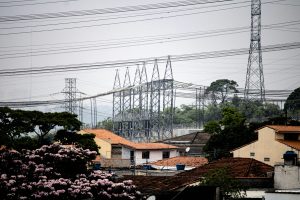The Silent Revolution: How Judicial Interpretation Transforms Constitutional Boundaries
The United States Constitution is the foundation of American democracy. While the text of this revered document remains unchanged, the interpretation of its principles has continuously evolved throughout history. This evolution is mainly driven by the judiciary branch of government, which has the power to interpret the Constitution and determine its boundaries. This process is known as judicial interpretation, and it has played a crucial role in shaping the constitutional landscape of the United States. In recent years, a silent revolution in judicial interpretation has been underway, transforming constitutional boundaries and sparking debates about the role of the judiciary in a democratic society. Let’s take a closer look at this silent revolution and its implications for the future of American democracy.
The Role of Judicial Interpretation
Article III of the Constitution grants the judiciary branch the power of judicial review – the authority to interpret the laws and determine their constitutionality. This power has enabled the judiciary to play a vital role in maintaining the balance of power between the three branches of government.
At its core, judicial interpretation seeks to apply the principles of the Constitution to contemporary issues and challenges facing the nation. This process is often fluid and subject to changes over time, influenced by social and political changes. As a result, the interpretations of the Constitution can vary greatly depending on the political ideology of the justices on the bench.
For decades, the Supreme Court has used judicial interpretation to expand and clarify constitutional rights, such as the right to privacy, the right to freedom of speech, and the right to equal protection and due process. However, in recent years, a new trend in judicial interpretation has emerged – one that is gradually changing the boundaries of the Constitution.
The Emergence of the Silent Revolution
The traditional view of judicial interpretation holds that the role of the courts is to interpret the Constitution based on its original meaning at the time of its drafting. However, a growing number of judges have abandoned this approach and embraced what is known as “living constitutionalism.” This approach views the Constitution as a living document that should adapt to changing times and needs, rather than being bound to its original intent.
This silent revolution in judicial interpretation has been driven by several factors, including the increasing polarization of politics, the fast-paced nature of technology, and the changing demographics of the country. As a result, the judiciary has become more active in shaping and defining constitutional boundaries, often in ways that align with their personal beliefs and values.
The Implications of the Silent Revolution
The silent revolution has sparked intense debates about the proper role of the judiciary in a democratic society. Critics argue that the growing trend of living constitutionalism goes against the democratic principles of checks and balances, as it gives unelected judges the power to make sweeping changes to the Constitution without accountability.
Moreover, with the confirmation of conservative-leaning justices in recent years, there are concerns that this trend will lead to a shift in constitutional boundaries that could have long-term implications for individual rights and liberties. At the same time, proponents of living constitutionalism argue that the judiciary has a duty to safeguard the values and principles enshrined in the Constitution, even if it means expanding or redefining its boundaries.
The Future of Judicial Interpretation
The silent revolution in judicial interpretation shows no signs of slowing down, and it is likely to continue shaping the constitutional boundaries of the United States. With the constant evolution of society and technology, the role of the judiciary in interpreting the Constitution will become even more crucial in the years to come.
One thing is certain – the silent revolution will continue to spark debates and shape the way we view the Constitution and its role in a democratic society. How the judiciary balances the principles of originalism and living constitutionalism will ultimately determine the future of American democracy and the rights and liberties of its citizens.
In Conclusion
Judicial interpretation has always been a vital process in shaping the boundaries of the United States Constitution. However, the emergence of the silent revolution in recent years has led to a more active and controversial role for the judiciary in defining these boundaries. As a result, the future of judicial interpretation and its impact on American democracy remains an ongoing and evolving debate.











